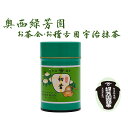Exquisite Japan through Wagashi
Wagashi is a compound word in Japanese: “Wa” is the word Hoa (和) which means Japan, and “gashi” is the alliteration of the word “kashi” (菓子), which means sweets, which is a word used to refer to different types of food. Sweets are not only delicious but also beautifully presented with the high aesthetic of the land of the rising sun.

Wagashi means beauty of nature. Each wagashi cake is like a small universe that harmoniously combines the beautiful elements of heaven and earth, synthesizing the nuances and essence of nature, like a child of heaven and earth.
The cake dough is colored according to the seasons of the year, the shape of the cake is very diverse, based on the images of flowers such as apricot blossoms, peach blossoms, trees, maple leaves, snowflakes... Especially, the filling is made from beans. Red represents the person in the center position.
How was Wagashi born?
Wagashi is an old cake, appearing in Japan very early. Starting from the Yayoi period (300BCE-300SCN), Wagashi was born and is a dish used to sacrifice to gods with the only ingredient being the kernel powder.
By the Nara period (710-784) , Wagashi was influenced by Chinese dough-making skills and Buddhist style leading to the appearance of Mochi and Dango.
Following the Era era (1336-1573) , the trade between Japan and Spain and Portugal brought many new sources of ingredients for Wagashi and made the recipe for Wagashi changed quite a bit.
By the Edo era (1603-1867) , the art of Wagashi making had risen to a new height, with the competition and growth of bakeries in Tokyo, Edo and other regions, becoming a distinctive feature, contributing to part for the variety of Japanese cuisine. During this time, the finest, most delicious wagashi appeared, especially in tea parties, tea ceremonies, light meals and as gifts and alcohol among the samurai.
But it wasn't until the Taisho era (1912-1926) that this delicate cake was officially given the name Wagashi, to distinguish it from Western pastries. And to this day, Wagashi cake as well as Wagashi making is popular throughout Japan, the purpose of using the cake is also more diverse. The traditional wagashi cake is still associated with Japanese life. On the one hand, wagashi continues to preserve the unique identities of the past, on the other hand, wagashi has been modified to suit industrial life and the purpose of spreading it to foreign countries.
1. Mochi
Mochi is the most basic and popular cake with the main ingredients from glutinous rice flour and red bean paste, usually with a characteristic round shape. The mochi has many colors and the filling is varied with green tea, taro, ice cream...
Kashiwa-Mochi is one of the traditional Japanese sweets on "Kodomo-No-Hi" - May 5 of Japanese children. This day is also called "Tango-No-Sekku" to pray for the boy's good health and is also used on the 3/3 "Momo-No-Sekku" girls' day.
2. Ukishima
This type of cake is made from flour, eggs and sugar quite similar to the Western sponge cake, but instead of baking, the cake is steamed and uses the familiar ingredient of red beans. The distinctive feature of Ukishiwa is that the cake has many layers, and its beauty is reflected in the harmony in the decoration between the layers.
3. Namagashi
Namagashi is actually a special kind of mochi: the crust is made of mochi (steamed glutinous rice flour), the filling is azuki (sweet red bean paste). Wagashi's shape is simulated the images of nature, symbolizing the four seasons of Japan such as: spring peach petals, autumn maple leaf, dew drops on leaves and yellow tangerine in summer, plum blossom for Winter… Through beautiful, delicate and gentle cakes, Japanese nature appears vivid, beautiful and bearing its own imprint.
The Japanese love to use namagashi to give gifts. A typical namagashi gift box usually has 4 cakes representing the 4 seasons of the year, with the meaning of wishing the recipient peace and happiness all year round.
In addition, Namagashi is the most suitable cake in the Japanese tea ceremony, the acrid taste of the tea is harmonized with the sharp sweetness of Namagashi, making the tea sweeter and easier to drink.
4.Higashi
This is a form of dried wagashi, shaped like Vietnamese printed cake. Higashi has the characteristic sweetness of wasambonto cane sugar (a rare premium sugar from Tokushima prefecture). Each higashi cake is like a delicately carved sculpture, creating a completely different stand out from other types of Wagashi.
5.Manju
Manju cake shell is made from jojo (magnetic tuber) dough, in the middle is a bean paste, molded into a round shape similar to Vietnamese dumplings. Manju are children's favorite cakes, because they often have fun and eye-catching shapes. The most famous type of manju is usagi manju - moon rabbit manju.
6. Yokan
Yokan is a type of jelly made from traditional jelly in Japan - kanten. The special thing is that each piece of transparent yokan will keep a "picture" full of art, typically the way the yokan is decorated with peach petals inside.
7. Dorayaki
Dorayaki is a baked cake born in the early Meiji period made from mashed red beans, eggs, and flour. Later, the Dorayaki cake was added with many types of taro, green beans or strawberries to diversify the flavor. The cake has a round and flat shape like a gong - a traditional Japanese musical instrument.
--------------------------
Injavi.com - Visit in Japan
Related Products







































































































